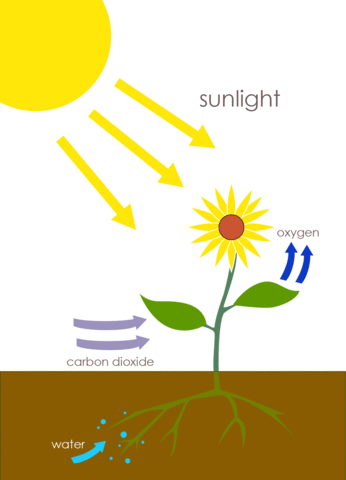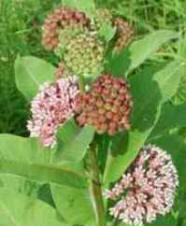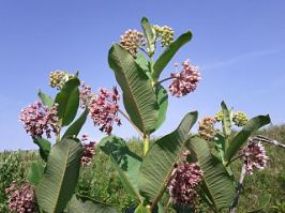Nutrition
Like most other plants, Asclepias syriaca is
autotrophic. This means it produces its own food, specifically by
photosynthesis. This process requires carbon dioxide from the
atmosphere, water taken up from the ground by the roots, and energy
from sunlight. Chlorophyll is also necessary for photosynthesis.
This is the pigment that plants have in their leaves that allow them
to be photosynthetic and gives them their green color. The products of photosynthesis are oxygen and
sugar (glucose). The excess glucose may be stored for energy
in the form of starch. Glucose is also transported throughout the
plant as sucrose, a different structure of sugar. This is briefly
illustrated in the diagram included. Plants have specialized cells
and structures in order to distribute these nutrients. To bring
water and minerals up from the roots to the leaves, there is primary
xylem. Primary phloem transports the sucrose from the leaves to the
rest of the plant. Relative to the xylem, phloem is on the outside
of the plant and xylem is in the middle. Primary xylem and phloem
are separated by the procambium. Many specialized cells and tissues
in plants are needed to aid in photosynthesis, transport of
nutrients, and support.
https://en.wikipedia.org/wiki/File:Photosynthesis.gif
Visit the
reproduction page next, or return
home.

 wikimedia
wikimedia